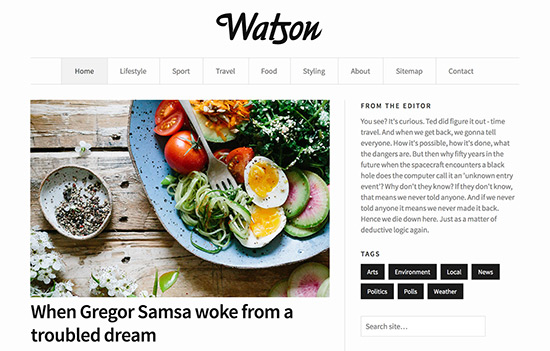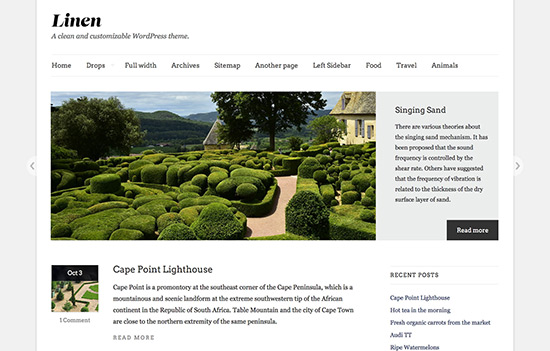Website navigation menus: Why less is more
By team on July 24, 2013
Your navigation is an important part of your website, and it might be hurting more than it’s helping.
You’ve got lots of important information to share on your website. Organizing it all can be a challenge. So you slowly start adding more and more menu items. Drop down menus become your best friend. More menu items are better, right?
Imagine you walk into a big department store to buy a shirt for your five year old nephew. On the wall is a large sign with four words: Women, Men, Kids, Customer Service. Each word has a floor number clearly marked next to it in orange. Kids is marked with “3rd floor”. You quickly head up to the third floor to look for a shirt.
Now, imagine you walk into that same department store, and you’re greeted by the same large sign, but this version features: several long lists of categories, information about the store’s policies, a warning about shoplifting, a flyer with the latest sales, and a reminder to follow the store on Twitter. After scanning for 30 seconds, you finally figure out that shirt is probably somewhere on the third floor.
Did the department store lose a sale in either case? No. But, there is a key difference between your website and the store: Once you’re at a physical store, you’ve already made a commitment and you’re much more likely to “stick with it”, even if you are a little bit annoyed.
Visiting a website requires no commitment. The slightest confusion might send you off in a different direction. Your website navigation can be a helpful guidepost that gives someone a reason to stay, or it can be a good reason to leave.
So, how do you choose what to include in your main navigation menu?
Start by re-evaluating what’s really important on your website. Ask yourself — “What absolutely critical information do I want to share with a new visitor?”. Try to stick to five concepts or less. If you’re a photographer, your answers might look like this:
- My best work.
- My story
- How I can help them.
- My blog (if I post regularly).
- My contact information.
They probably won’t include things like:
- Visit my Twitter profile.
- Visit my Facebook page.
- Browse my Sitemap.
- Read my Privacy Policy or Terms of Service.
What’s critically important will be different for each website. If you’re posting articles and news, “Provide an easy way to contact me” might not be critical information. Instead, you might place more value on the different topics you post about. The information is entirely dependent on the purpose of your website.
You’ll want to translate that critical information into good concise menu titles. Your main menu from our example above might look like this:
- Portfolio
- Our Story
- Services
- Blog
- Contact
That’s all you need. The less important information from our example (Twitter, Facebook, Privacy Policy) is better off in a footer or sidebar.
Try to avoid drop down menus. They can be useful in certain scenarios, but for most small websites, they really aren’t necessary. Instead, concisely communicate the ideas you would normally include in a drop down menu into your important pages.
When someone visits your website for the first time, you have a few precious seconds to make an impression and provide important information. If they can’t find what they need, or if they’re confused, they’ll probably just leave. Remember, it’s your job to make sure they find that important information.
Enjoy this post? Read more like it in Business.






